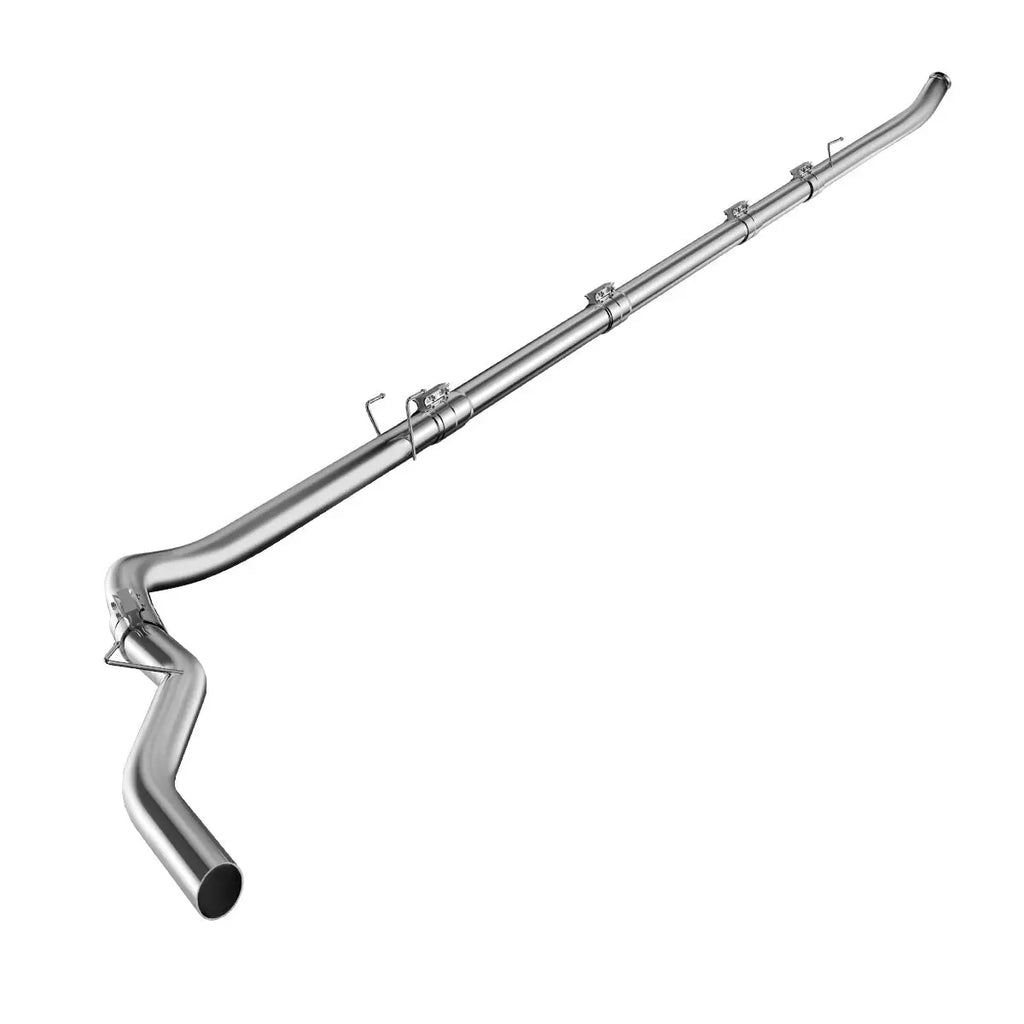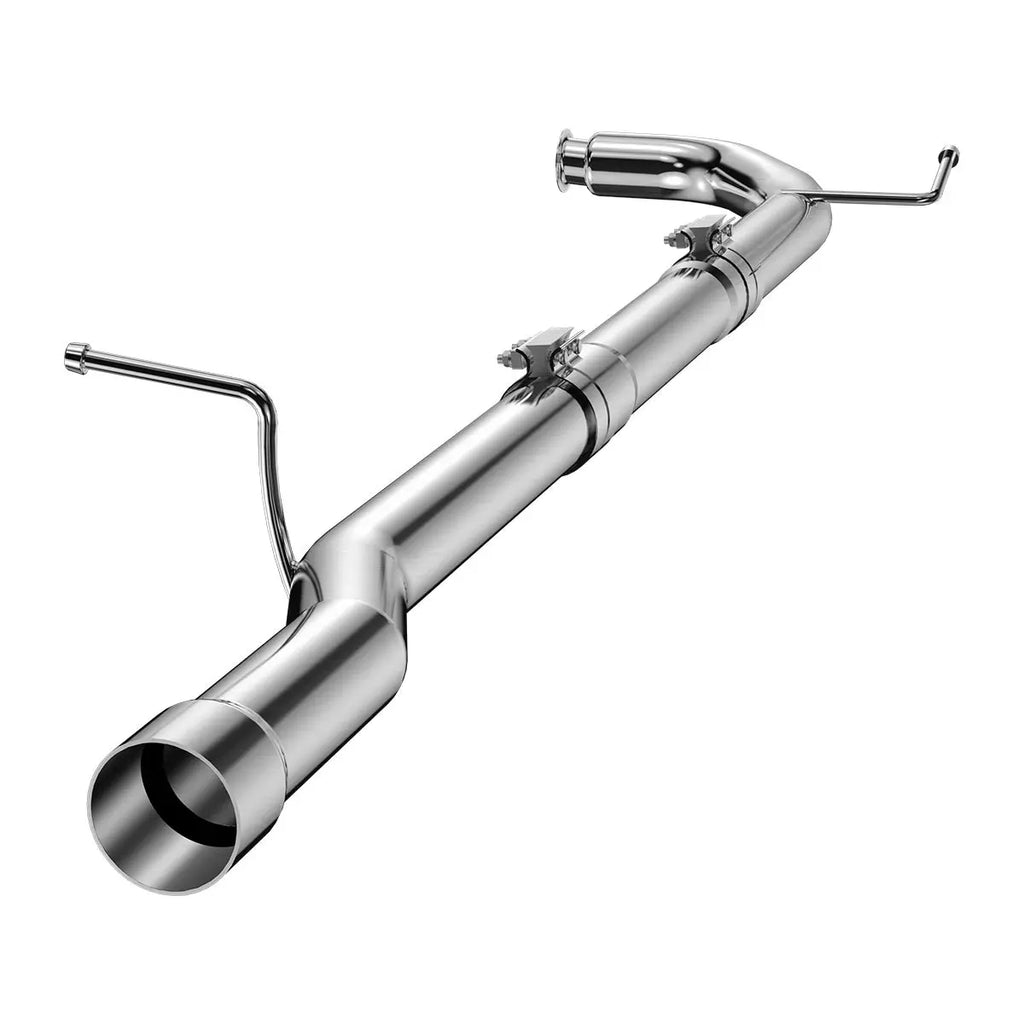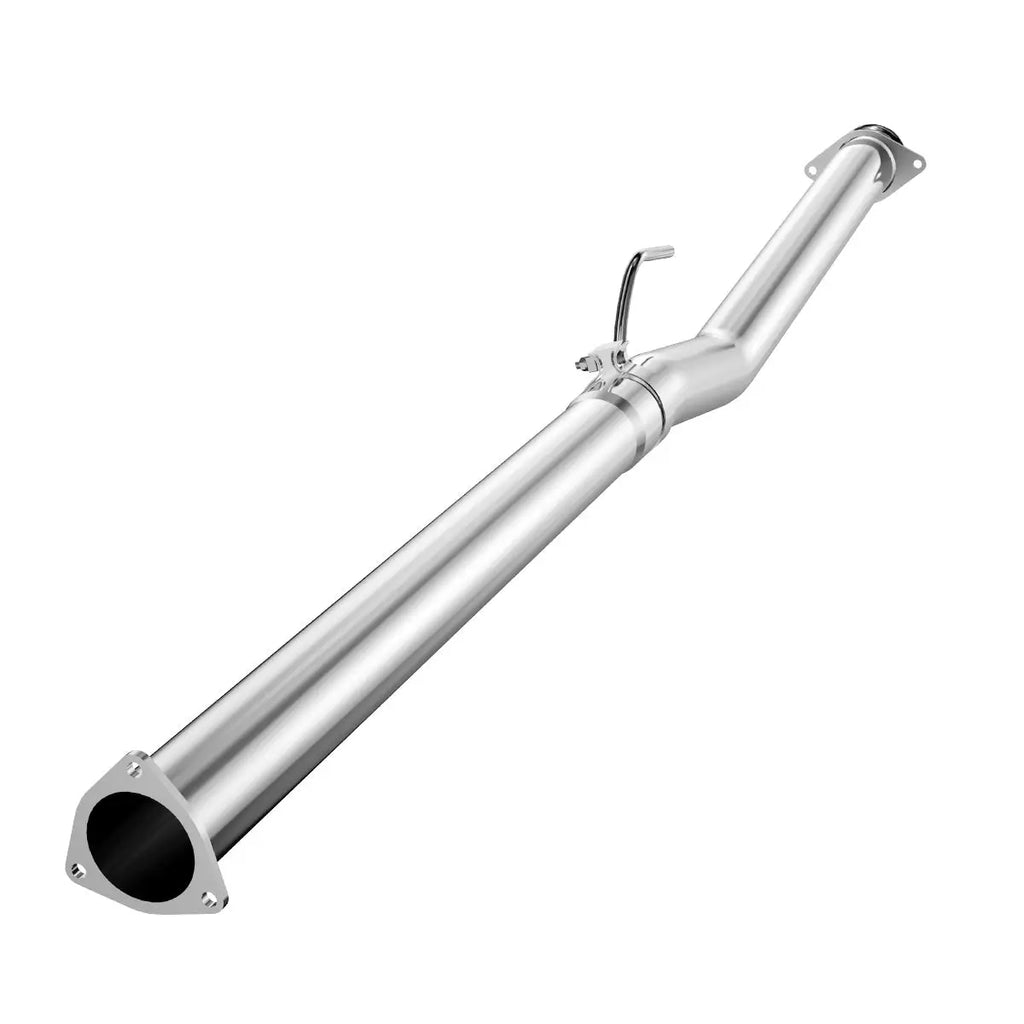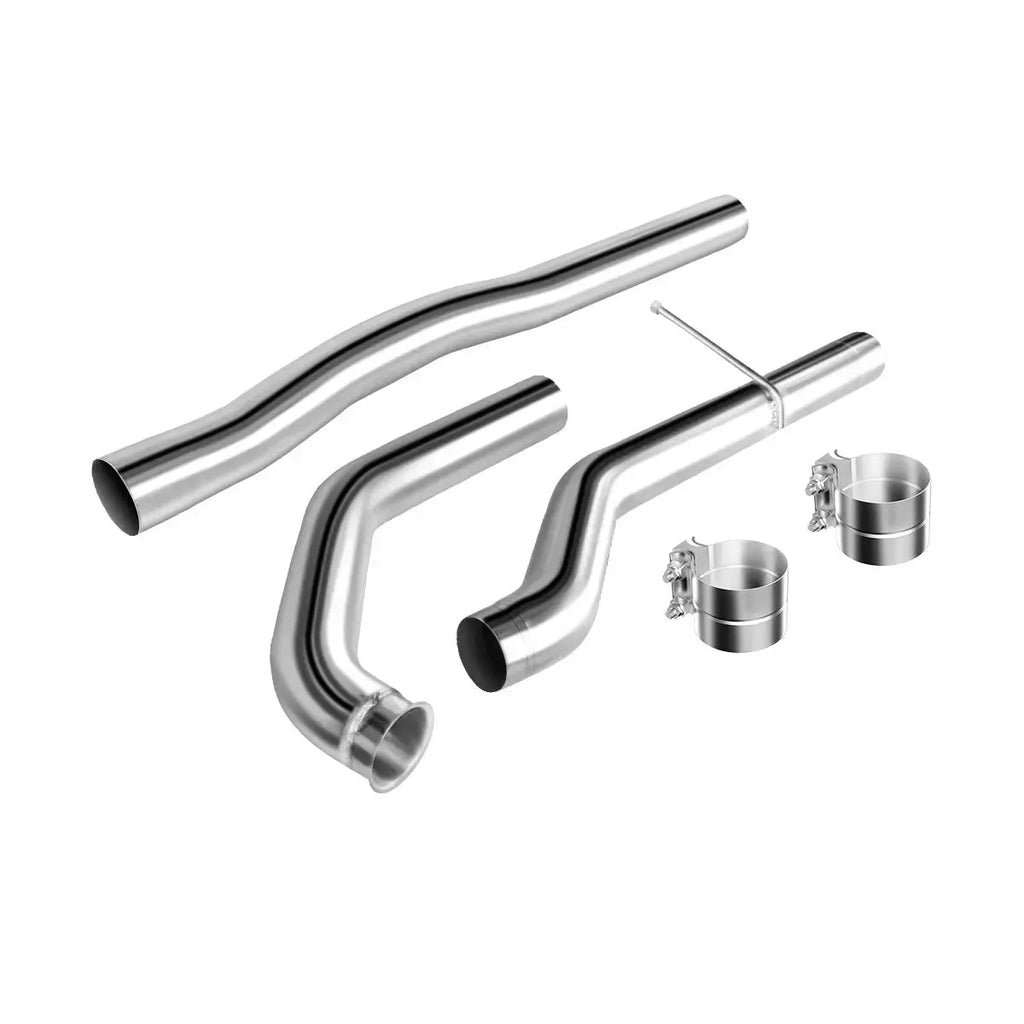Unlock Peak Perfo...
Aug 15, 2025

Diesel particulate filters (DPF) have emerged as indispensable components in curbing exhaust emissions, particularly amidst the widespread adoption of diesel vehicles. However, a growing number of vehicle owners are delving into the realm of DPF delete tubes, seeking to enhance performance. In this comprehensive guide, we'll delve into What is DPF and uncover the advantages of removing them.
DPF filters typically consist of a ceramic honeycomb-style substrate capable of filtering out minuscule soot particles without significantly impeding overall exhaust flow. The filter captures soot particles until it reaches capacity, leading to an increase in restriction levels.
During regeneration, the DPF filter's temperature rises, burning off accumulated soot and transforming it into tiny ash particles. These smaller ash particles alleviate the restriction, restoring exhaust flow to near-original levels.
Throughout regeneration, the engine, exhaust gas recirculation (EGR) system, and turbocharger collaborate to elevate exhaust temperatures. Once optimal temperatures are attained, the dosing injector is activated. The doser injects diesel into the exhaust stream, passing it into the oxidizing catalyst. This catalyst induces a reaction with the diesel and hot exhaust gas, generating extreme temperatures as the exhaust flows into the DPF filter. The intense heat incinerates the soot, converting it into ash particles that remain trapped by the DPF filter.
Simultaneously, the DPF pressure differential sensor and exhaust gas temperature sensors monitor the process, relaying information about the DPF system's status to the engine or aftertreatment computer.
Benefits of DPF deletion primarily revolve around performance and maintenance cost reduction. Deleting the DPF eliminates exhaust process limitations, allowing gases to exit more freely, thereby reducing exhaust backpressure and slightly increasing torque and horsepower.
Moreover, since periodic regeneration cycles necessitate fuel, deleting the DPF may lead to slight fuel cost reductions. Enhanced exhaust flow may also boost engine efficiency, further reducing fuel consumption.
Furthermore, DPF deletion translates to decreased maintenance costs, as the removal of this component simplifies vehicle upkeep, eliminating the need to clean a clogged DPF filter. Assuming no other issues arise from DPF deletion, vehicle maintenance expenses may be slightly lower.
However, it's crucial to note that DPF removal isn't a panacea for transforming a standard car into a high-performance vehicle. Any performance and fuel economy gains are likely to be modest, making DPF deletion primarily appealing to individuals seeking to maximize horsepower and torque output from their vehicle.
When considering a DPF delete, choosing a trusted and performance-oriented solution is essential. DynoVox stands as a leading brand in the diesel performance aftermarket, offering premium DPF Delete Pipes designed for reliability, power, and ease of installation.
Each DynoVox DPF Delete Pipe is crafted from high-grade stainless steel, ensuring superior durability and corrosion resistance under extreme driving conditions. Our delete pipes are engineered for precision fitment, minimizing installation time while maximizing exhaust flow efficiency. By removing the restrictive factory DPF component, DynoVox pipes significantly reduce backpressure, helping your engine breathe easier and operate more efficiently.
In addition to improved performance and fuel economy, DynoVox products are rigorously tested to ensure compatibility with a wide range of diesel vehicles. Whether you're upgrading a Cummins, Duramax, or Powerstroke engine, DynoVox provides tailored solutions to support your off-road or racing performance goals.
For those seeking an optimal balance between performance enhancement and long-term value, DynoVox delivers unmatched quality backed by professional-grade engineering and exceptional customer support.




⚠️ Note: All DynoVox DPF delete products are intended for off-road or competition use only where emissions regulations do not apply. Please verify your local laws before modifying your emissions system.
When contemplating the deletion of a Diesel Particulate Filter (DPF), several critical considerations should be taken into account:
1. What does a DPF delete do to a diesel engine?
A DPF delete removes the diesel particulate filter from the exhaust system, allowing for improved exhaust flow, reduced backpressure, and enhanced engine performance.
2. Is it legal to delete a DPF filter?
In most regions, deleting a DPF is illegal for on-road use and may result in fines or failed emissions tests. However, it may be permitted for off-road, racing, or agricultural vehicles depending on local regulations.
3. What are the benefits of a DPF delete kit?
DPF delete kits can improve horsepower, increase fuel economy, lower exhaust gas temperatures (EGTs), and reduce maintenance issues related to filter clogging or regeneration cycles.
4. Does deleting DPF improve fuel economy?
Yes, many diesel truck owners report a noticeable improvement in fuel economy after deleting the DPF, as the engine operates more efficiently without the restrictive emissions component.
5. Can a DPF delete damage your engine?
When installed and tuned correctly, a DPF delete does not harm the engine. In fact, it often reduces engine stress by improving airflow and lowering exhaust temperatures.
6. How much does it cost to delete a DPF system?
The cost of a DPF delete varies depending on the vehicle model and kit components. Most kits range from \$400 to \$1,500, not including installation or tuning costs.
7. Will deleting DPF void my warranty?
Yes, performing a DPF delete typically voids the factory emissions warranty and may impact the powertrain warranty if detected by a dealer or manufacturer.
8. Do I need a tuner for a DPF delete?
Yes, a proper DPF delete requires an ECU tuner or delete tune to reprogram the engine’s emissions settings and prevent fault codes or limp mode.
9. Is a DPF delete worth it for off-road use?
For off-road, racing, or agricultural applications, a DPF delete can be highly beneficial, offering better performance, reliability, and lower long-term operating costs.
10. How do I choose the right DPF delete kit for my truck?
Select a DPF delete kit that is specifically designed for your engine type and year (e.g., 6.7L Cummins, Duramax L5P, Powerstroke 6.7L). Look for high-quality components and ensure compatibility with your tuner or ECM.